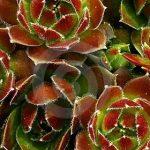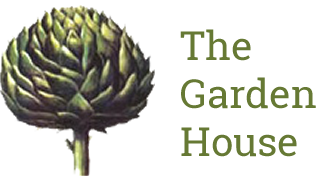We love: Sempervivums
Posted:2 October 2011
We love sempervivums (houseleeks) they are such easy plants to grow, tolerating cold temperatures but not liking wet weather. Sempervivum means always alive a reference to the fact that houseleeks tolerate extreme temperatures and drought. The hardiness of Sempervivum, and the closely related genus Jovibarba (also known as hen and chickens), makes them excellent, easy-to-keep garden plants.
 Sempervivum and Jovibarba species are commonly grown in containers, but they can thrive in engineering bricks with holes, driftwood and tufa rock, because of their ability to grow in very little compost. South-facing rockeries, gravel gardens and vertical walls also make good habitats. The also look good in broken pots.
Sempervivum and Jovibarba species are commonly grown in containers, but they can thrive in engineering bricks with holes, driftwood and tufa rock, because of their ability to grow in very little compost. South-facing rockeries, gravel gardens and vertical walls also make good habitats. The also look good in broken pots.
They thrive in a sunny, outdoor position, in well-drained compost, such as John Innes No.1 or No.2, with 25% sharp horticultural grit for added drainage. A layer of grit should be added to the surface of the compost to further aid drainage.
Houseleeks are most valued for their distinctive rosettes of succulent, spirally patterned foliage, although they also bear attractive flowers from spring to summer. Each rosette is a separate plant, and is monocarpic it flowers once then dies, but is soon replaced by other new rosettes, called offsets. These offsets can be separated and planted up, and will then grow into new clumps.
Sempervivums dont need feeding, but do benefit from being repotted each year into compost containing slow-release fertiliser.
- S. calcareum bears very striking, large, grey-green rosettes, which shade to reddish-brown at the leaf tips.
- S. calcareum Extra bears large numbers of blue-green leaves in each of its rosettes, each with a distinctive reddish-brown tip.
- S. arachnoideum possibly the most famous species, also known as the cobweb houseleek, due to the network of white hairs at the leaf tips. These hairs protect the plant against dehydration and intense sunlight.
- S. Irazu the attractive purple rosettes of Irazu are offset beautifully by their silver leaf margins. The leaves can fade to a duller pink during winter.
- S. Reinhard a vigorous variety, which forms clumps of upright green rosettes, thrown into sharp relief by the almost black leaf tips.
- S. Fernwood similar in colouring to Reinhard, Fernwood has larger, more open rosettes. It maintains its colour well throughout the year.
- S. Squib red houseleeks generally require high light levels to maintain their colour, but Squib, a dark purple variety, keeps its colour well in winter.
- S. Moerkerks Merit the velvety appearance of Moerkerks Merit is due to the tufty hairs that adorn the leaf tips. Related to S. arachnoideum, its leaves are a delicate silver-green.
- Jovibarba heuffelii Angel Wings whereas sempervivums mostly produce red or pink flowers, Jovibarba species produce yellow, more bell-like flowers. Angel Wings is a vigorous variety with sharply pointed brown and green leaves.
- Jovibarba allionii has long, tapered leaves. Jovibarba offsets separate from the clump much more readily than those of Sempervivum, and the rosettes are generally more sturdy.
We have some stunning ‘Semps’ for sale at the Garden House – really worth a look for a special present or if you are starting a collection. Also check out Sempervivums By Post (our main image is from their wonderful website) www.sempsbypost.co.uk

